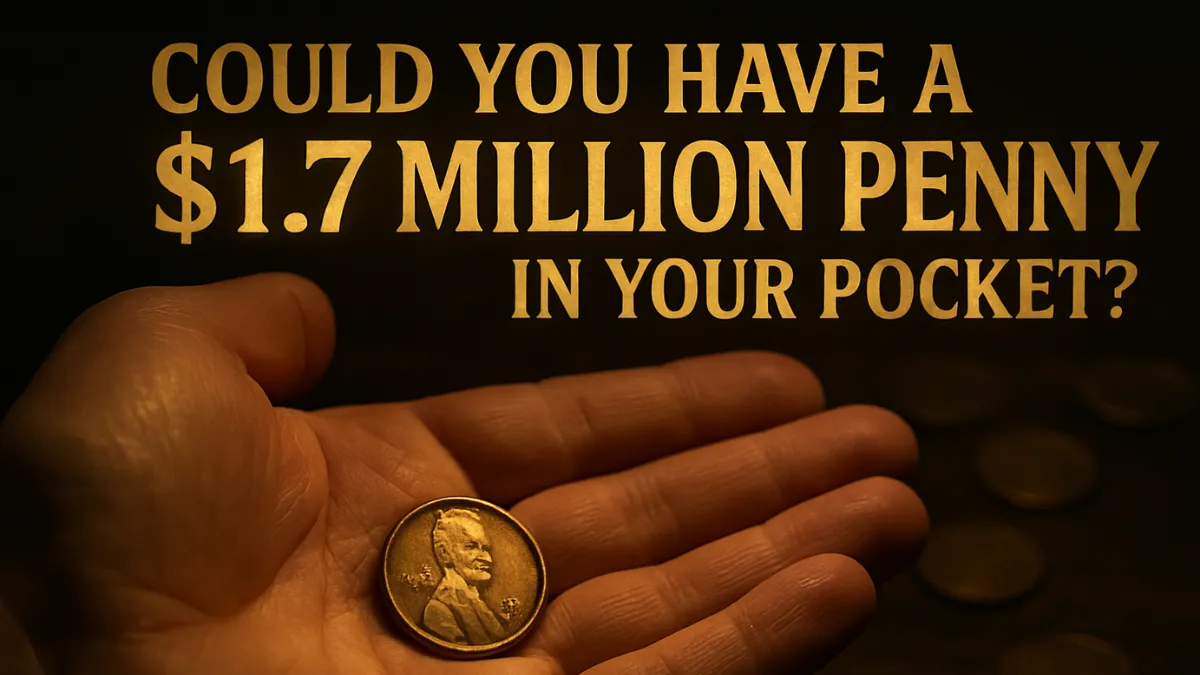Imagine reaching into your pocket for some spare change and pulling out a coin worth over a million dollars. Sounds like a dream, right? Well, it might not be as far-fetched as you think. The Lincoln Wheat Penny, a common-looking coin minted between 1909 and 1958, has become one of the most talked-about coins in the world of rare coin collecting. One version of this penny, in particular, has sold for a jaw-dropping $1.7 million.
Let’s explore why this tiny copper coin is worth so much, how to identify valuable ones, and what to look for in your own change jar.
What Is a Lincoln Wheat Penny?
The Lincoln Wheat Penny, also called the “Wheat Cent,” was the first U.S. coin to feature a real person—President Abraham Lincoln. It was introduced in 1909 to celebrate Lincoln’s 100th birthday. The coin’s reverse (back) has two stalks of wheat, giving it its nickname.
Though millions of these pennies were minted, not all are created equal. Certain versions with minting errors, rare dates, or low production numbers have become highly valuable.
The $1.7 Million Penny: What Makes It So Special?
The most famous high-value Lincoln Wheat Penny is the 1943 Bronze Lincoln Penny.
Here’s why it’s so valuable:
- In 1943, due to wartime shortages during World War II, the U.S. Mint switched from using copper to zinc-coated steel for pennies.
- However, a small number of 1943 pennies were mistakenly made using leftover bronze planchets (the copper material used the year before).
- Only around 10 to 20 authentic 1943 Bronze Pennies are known to exist today.
- One of these extremely rare coins sold for $1.7 million at auction because of its rarity and the story behind it.
This coin is a perfect storm of rarity, historical significance, and collector demand.
How to Identify a 1943 Bronze Lincoln Penny
If you want to check your own coins, here’s what to look for:
Check the Date
- Look for “1943” on the front of the coin.
Test the Material
- Most 1943 pennies are steel and will stick to a magnet.
- A real 1943 Bronze Penny will NOT stick to a magnet.
- If it’s brown or copper-colored and doesn’t react to a magnet, it could be worth a closer look.
Inspect the Weight
- A bronze penny weighs about 3.11 grams.
- A steel penny is lighter, weighing around 2.7 grams.
- You’ll need a precise scale to measure accurately.
Seek Professional Grading
- If you think you have a rare version, don’t clean or damage it.
- Get it professionally evaluated by a trusted coin grading service like PCGS or NGC.
Other Valuable Lincoln Wheat Pennies to Watch For
Even if you don’t have the 1943 Bronze Penny, there are other Wheat Pennies that can fetch hundreds or thousands of dollars, such as:
1909-S VDB
- This was the first year the Lincoln Cent was made.
- Only 484,000 were minted in San Francisco with designer Victor D. Brenner’s initials (“VDB”) on the back.
- Value: $1,000–$60,000+ depending on condition.
1914-D
- A low mintage coin with only 1.2 million made in Denver.
- Value: $200–$13,000+.
1922 “No D”
- A 1922 penny from the Denver Mint with a missing “D” mintmark due to a worn die.
- Value: $500–$15,000+.
1955 Double Die
- One of the most famous error coins.
- The date and lettering appear doubled, especially noticeable on “LIBERTY” and “IN GOD WE TRUST.”
- Value: $1,000–$20,000+.
Why Do People Pay So Much for Rare Pennies?
Rare coins like the Lincoln Wheat Penny appeal to collectors for a few key reasons:
- Rarity: Fewer coins mean higher demand.
- Historical Interest: Coins tell a story about the time they were made.
- Investment Value: Some see coins as alternative investments.
- Condition: High-grade coins that look almost new are worth the most.
In the case of the 1943 Bronze Penny, it’s a mix of all these factors. The mistake, the mystery, and the war-era history all play a role in driving the value sky-high.
Could You Really Have One?
Yes, it’s possible—though rare. People have found valuable coins in:
- Old jars of saved pennies from grandparents.
- Flea markets and garage sales.
- Coin rolls from the bank.
- Pocket change, though this is less likely today.
Even if you don’t find a million-dollar coin, many Wheat Pennies can still bring in $5 to $100 or more, depending on the year, mintmark, and condition.
